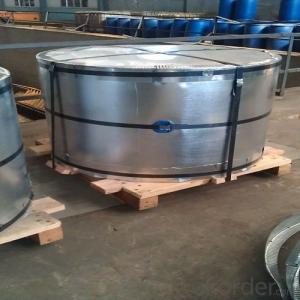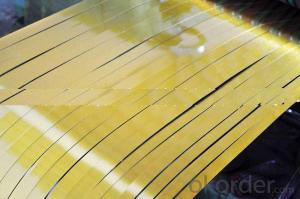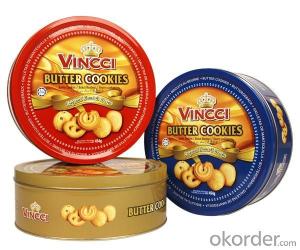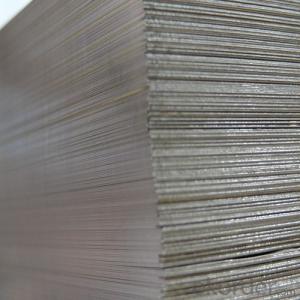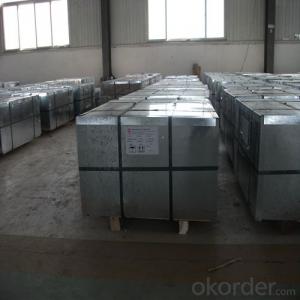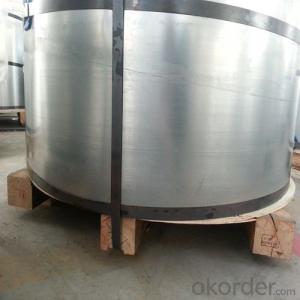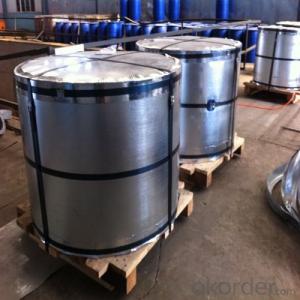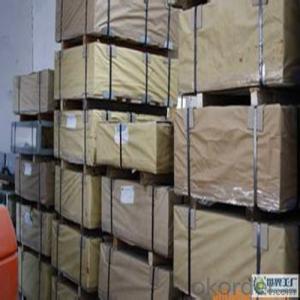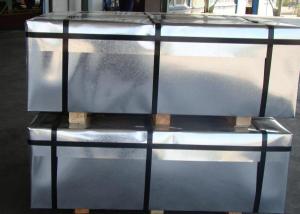Electrolytic Tinplate and TFS for Chemical Use 0.32mm Thickness
- Loading Port:
- Shanghai
- Payment Terms:
- TT OR LC
- Min Order Qty:
- 25 m.t.
- Supply Capability:
- 30000 m.t./month
OKorder Service Pledge
OKorder Financial Service
You Might Also Like
Specification
1.Structure of Electrolytic Tinplate and TFS for Chemical Use 0.32mm Thickness Description
Electrolytic Tinplate, is one thin steel sheet with a coating of tin applied by electrolytic deposition. Tinplate made by this process is essentially a sandwich in which the central core is strip steel. This core is cleaned in a pickling solution and then fed through tanks containing electrolyte, where tin is deposited on both sides. As the strip passes between high-frequency electric induction coils, it is heated so that the tin coating melts and flows to form a lustrous coat.
2.Main Features of the Electrolytic Tinplate and TFS for Chemical Use 0.32mm Thickness
Paintability and printability – Tinplates have excellent paintability and printability. Printing is beautifully finished using various lacquers and inks.
Corrosion resistance – Tinplate has got good corrosion resistance. By selecting a proper coating weight, appropriate corrosion resistance is obtained against container contents. Coated items should meet 24 hour 5 % salt spray requirement.
Solderability and weldability – Tinplates can be joined both by soldering or welding. These properties of tinplate are used for making various types of cans.
Safe – Tinplate being low weight and high strength makes food cans easy to ship and transport.
Eco friendly – Tinplate offers 100 % recyclability.
Tin is not good for low temperature applications since it changes structure and loses adhesion when exposed to temperatures below – 40 deg C.
3.Electrolytic Tinplate and TFS for Chemical Use 0.32mm Thickness Images
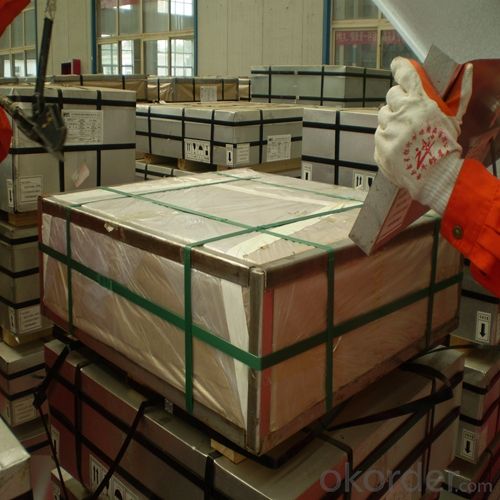
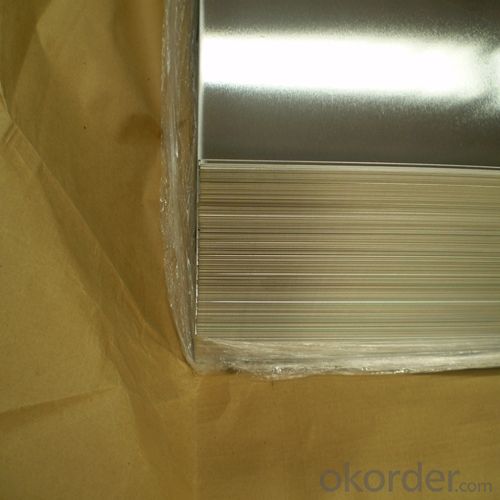
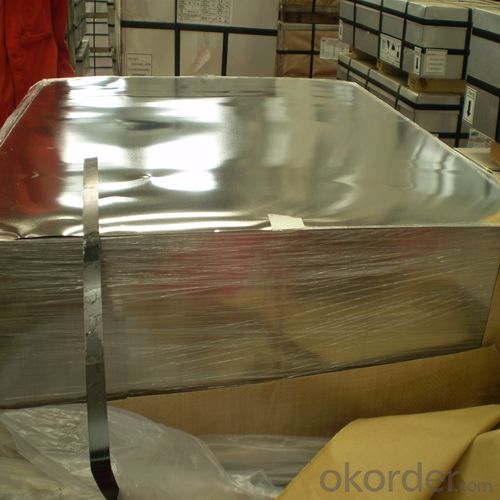
4.Electrolytic Tinplate and TFS for Chemical Use 0.32mm Thickness Specification
Specification of :
Standard: ISO 11949 -1995, GB/T2520-2000,JIS G3303,ASTM A623, BS EN 10202
Material: MR,SPCC
Thickness:0.15mm - 0.50mm
Width: 600mm -1150mm
Temper: T1-T5
Annealing: BA & CA
Coil Inner Diameter: 508mm
Weight: 6-10 tons/coil 1~1.7 tons/sheets bundle
Passivation:311
Oil: DOS
Surface: Finish,bright,stone,matte,silver
5.FAQ of Electrolytic Tinplate and TFS for Chemical Use 0.32mm Thickness
- How are the tinplates specified?
The tinplates are specified as per the steel base, extent of tempering, the coating weight, annealing method and the surface finish.
- How many types there are for base steels?
The base steels are of three types: Type MR, L, D
- Q: How long does tinplate last?
- Tinplate can last for several decades if properly maintained and protected from corrosion.
- Q: What are the main applications of tinplate in the agricultural industry?
- Tinplate is commonly used in the agricultural industry for various applications such as packaging for seeds, fertilizers, and pesticides. It provides a durable, corrosion-resistant, and tamper-proof solution that helps protect these products from external elements. Additionally, tinplate is also utilized for manufacturing agricultural equipment, containers, and storage tanks due to its strength and resistance to rust.
- Q: What are the different methods of recycling tinplate packaging?
- The different methods of recycling tinplate packaging include sorting, cleaning, shredding, melting, and reprocessing. Sorting involves separating tinplate packaging from other materials. Cleaning removes any contaminants from the tinplate. Shredding breaks down the tinplate into smaller pieces. Melting helps to separate the tin coating from the steel base. Finally, reprocessing involves transforming the separated tin and steel into new products or materials.
- Q: How does tinplate contribute to the safety of automotive components?
- Tinplate contributes to the safety of automotive components by providing a protective barrier against corrosion. This corrosion resistance helps to prevent the degradation of critical components, ensuring their structural integrity and durability. Additionally, tinplate can also be used as a coating to enhance the impact resistance and strength of automotive parts, further enhancing their safety performance.
- Q: Tinned iron and iron matte tin in difference
- Tin tin in tin and iron is ordinary, the price is cheaper than the frosted iron, no sand surface, at the grassroots level printed on a white layer after printing all kinds of exquisite patterns, but also can do all kinds of gold silver transparent iron printing, in the light can return the light, give a person a kind of dazzling feeling also, high-grade, affordable prices, so the tinned iron printing packing made by wide customers.
- Q: How can tinplate be identified?
- If the food is ready to eat food grade, dressed in non food is to chemical grade on it.
- Q: How does tinplate perform in terms of moisture barrier properties?
- Tinplate demonstrates excellent moisture barrier properties due to its inherent corrosion resistance and the presence of a thin tin coating on its surface. This coating acts as a protective barrier, preventing moisture from penetrating the tinplate and maintaining the integrity of the packaged product.
- Q: How does tinplate compare to plastic in terms of sustainability?
- Tinplate generally has a higher sustainability profile compared to plastic due to several reasons. Firstly, tinplate is a highly recyclable material, with a recycling rate of around 90%, while plastic recycling rates vary and are generally lower. This means that tinplate is more likely to be reused and diverted from landfills, reducing its environmental impact. Additionally, tinplate production requires significantly less energy and emits fewer greenhouse gases compared to plastic manufacturing. Moreover, tinplate is more durable and has a longer lifespan, making it suitable for multiple uses, whereas plastic is often single-use and contributes to the growing waste problem. Overall, tinplate offers better sustainability prospects in terms of recycling, energy consumption, and durability compared to plastic.
- Q: What are the transportation considerations for tinplate?
- The transportation considerations for tinplate typically revolve around its weight, fragility, and potential for damage. Tinplate is quite heavy, so proper handling and lifting equipment are necessary to ensure safe transportation. Its fragile nature means that it should be protected from impacts and vibrations during transit to prevent dents, scratches, or other damage. Additionally, as tinplate is susceptible to corrosion, it is important to protect it from moisture and humidity during transportation, such as by using proper packaging and ensuring a dry environment.
- Q: What are the common challenges in processing tinplate?
- Some common challenges in processing tinplate include ensuring proper coating adhesion, preventing tinplate corrosion, managing the formation of tin whiskers, and achieving consistent thickness and flatness in the tinplate sheets. Other challenges may include controlling the tinplate's surface quality, preventing contamination during processing, and ensuring proper handling and storage to avoid damage.
Send your message to us
Electrolytic Tinplate and TFS for Chemical Use 0.32mm Thickness
- Loading Port:
- Shanghai
- Payment Terms:
- TT OR LC
- Min Order Qty:
- 25 m.t.
- Supply Capability:
- 30000 m.t./month
OKorder Service Pledge
OKorder Financial Service
Similar products
Hot products
Hot Searches
Related keywords
